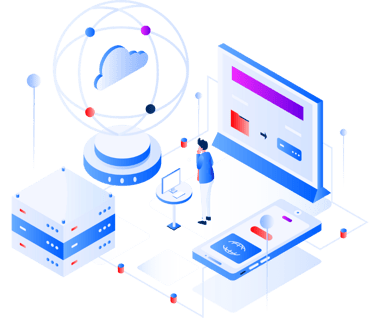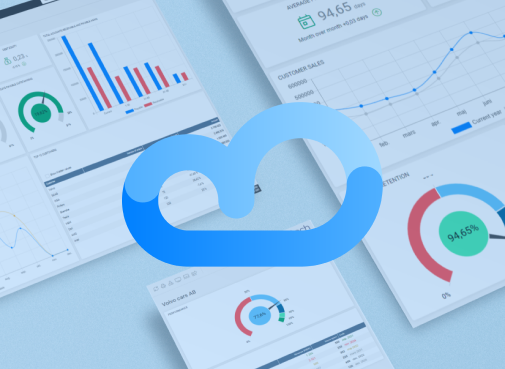What is data quality? Part 4
How do we ensure our data quality? This is an ever-present point of discussion in many companies, regardless of department or duties. The quality of...
Our Business Cloud integration platform suits large and small businesses!

Feel free to contact us to hear how we can help you with integrations (new and old), reporting, budget and forecasting.
+46(0)707 - 81 97 23Read more about what happens at Lundatech, here we gather knowledge and information.

Vår integrationsplattform Business Cloud passar stora som små verksamheter!

Kontakta oss gärna för att höra hur vi kan hjälpa er med integrationer (nya som gamla), rapportering, budget & prognos.
+46(0)707 - 81 97 23Läs mer om vad som händer på Lundatech, här samlar vi kunskap och information.

3 min read
Lundatech
Feb 21, 2023 10:40:02 AM

Today, it is not a question of whether you should have an integration solution – it is about what type of integration solution you choose. With the right choice of integration solution, your company can increase your competitiveness, work more sustainably and feel secure both today and in the future. In this post, we take a closer look at the biggest differences between traditional point-to-point and innovative iPaaS (Integration Platform as a Service).
According to our experience of the market around integrations, the so-called point-to-point the most common solution. However, we see a clear trend that more companies are starting to turn to iPaaS solutions.
This approach involves building custom integrations between each pair of systems that need to exchange data, such as the payroll system and the visualization tool. This can be a time-consuming and error-prone process, precisely because the system map is changing and the connections required are increasing.
The reason this solution still exists is to be able to accommodate each system's unique needs for data, how the structure is built, and in what format it is managed. The challenge comes when the company grows or adds more systems. The risks that come are partly expensive maintenance of the integrations, and partly that you get different data for each integration.
IPaaS is a cloud-based platform that enables businesses to integrate disparate software applications, data sources, and devices into a single, cohesive environment. It helps companies create one version of the truth for the entire business, regardless of the format or source of the data. IPaaS provides a set of tools and services for building, deploying and managing integrations between different systems, both within an organization and with external partners.
Implementation
Point-to-point requires extensive consulting resources and hours (read months) for those who will build the integrations, as well as resources from the respective systems to be integrated. This results in long lead times and many people who must be synchronized for the integrations to succeed.
iPaaS is a system that follows a standardized process and tools to implement the integrations and requires significantly less time to implement. IPaaS is not as dependent on people and it is easier to add, remove or replace systems within the organization. When the system map changes, existing systems are not affected, and historical data can also be obtained.
Maintenance
Maintaining a point-to-point solution requires a lot of maintenance, either internally or externally. Often the integrations are person-dependent as they are uniquely structured based on expertise and the system's needs. If something goes wrong, or if it's time to replace a system, you can sometimes have to count on extra waiting times when you have to book specific resources.
With iPaaS, the system notifies the user when something deviates, so that the person in charge can easily correct the error in the right place, without manual troubleshooting. The automation in iPaaS makes maintenance essentially non-existent for the end user.
One version of the truth for all consuming systems
With point-to-point, you risk being faced with multiple versions of data, because the information runs through isolated channels for each system.
With iPaaS, a unified channel is built for all data, where data from all systems is taken into account. Regardless of where in the organization you sit, everyone has access to the same data in real time.
Proactive monitoring
Integration through point-to-point has no built-in functionality to control data. It is a relatively manual process that requires expertise either in-house or externally.
iPaaS has system functions that can, for example, monitor integrations, check data and notify the user if there has been any deviation. In this way, no manual monitoring is required and it is possible to work proactively.
Economic effects
Point-to-point costs depend on the scope of the project, number of integrations and how many consultants are required during the months the integrations are built. It can be difficult to predict the cost in advance.
iPaaS is a service with a fixed monthly fee. Because the integration process is largely automated, it can happen in hours instead of months. It is easier to predict the costs even after the integrations have been completed.
Performance
There are limitations for point-to-point integrations to allocate resources and thus be flexible and meet the current need.
With iPaaS, you can load balance the resources in a systemic way, which provides compliance adapted to volume and needs. This also means that we do not use more resources than necessary.
Which integration solution is best for your company?
It can be difficult to know which option is best for your business. For small businesses with very simple IT infrastructures, point-to-point solutions can be a good start. When the company grows, or wants to integrate more systems, it is possible to switch to an iPaaS.
For larger companies that have more tools or systems and high demands on security, iPaaS is recommended. It is the most cost-effective way to get a central platform for all integrations, one version of the truth for the entire business, and the possibility of automation and flexibility.
Are you curious to know how Business Cloud iPaaS can help your company with integration and data quality? Contact me below or book a demo and I'll tell you more.

Staffan Hedbrandh, CEO

How do we ensure our data quality? This is an ever-present point of discussion in many companies, regardless of department or duties. The quality of...

How do we ensure our data quality? This is an ever-present point of discussion in many companies, regardless of department or duties. The quality of...

How do we ensure our data quality? This is an ever-present point of discussion in many companies, regardless of department or duties. The quality of...